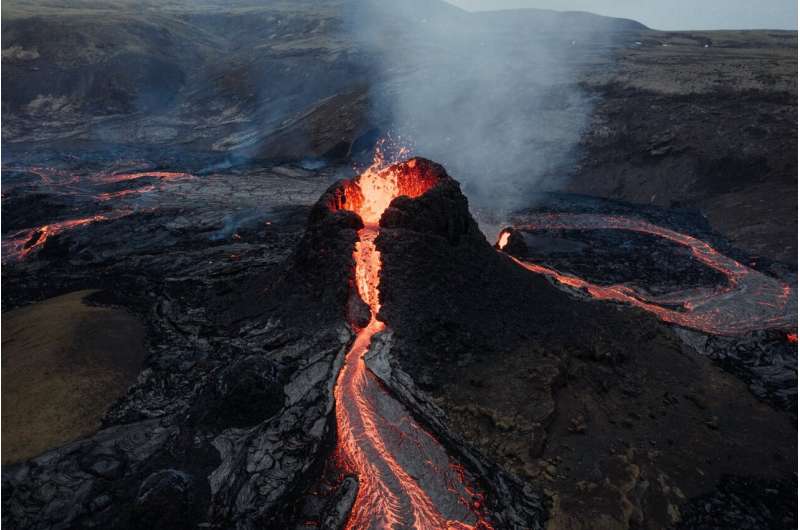This article has been reviewed according to Science X's editorial process and policies. Editors have highlighted the following attributes while ensuring the content's credibility:
fact-checked
trusted source
proofread
How long will the volcanic eruption in Iceland last? It depends how much magma needs to come out, expert says

The signs started appearing in early November, and people waited anxiously as earthquakes and ground swells indicated a volcanic eruption near Grindavik, Iceland, was imminent.
Monday night, the volcano erupted. But the waiting game continues.
"I think we're less than 24 hours in after the actual eruption so it's early days for sure," Daniel Douglass, teaching professor in marine and environmental sciences at Northeastern's Marine Science Center, said Tuesday morning.
"It will end eventually—there's not an endless body of magma that will be released—but how long it takes depends on how much magma needs to come out, and I've not heard any prediction of whether this is going to be days, weeks or months."
Residents of Grindavik, a fishing town in southwestern Iceland, evacuated and a state of emergency was declared in early November, as local authorities warned of an imminent volcanic eruption following earthquake activity and a 6.2-mile plume of magma moving underground.
But then the area went into a "kind of holding pattern," Douglass said, as signs died down. That ended Monday night as a 2-mile fissure began spewing lava. Magma is called lava when it is on the surface of the earth.
"The initial force of eruption was pretty impressive, and there's been a decrease in activity since then," Douglass said. "There was a report of five main places where lava is coming out now, but the flow rate has subsided from the surge of the initial eruption."
For example, Douglass said lava was "only" getting thrown 100 feet in the air currently, and the ash has not gone high enough to affect international air travel.
But many questions remain.
The direction and distance of the lava's flow is uncertain. Douglass described the area as fairly remote. However, he said there is a power plant and tourist attraction to the west of the eruption and Grindavik to the southwest.
"If it doesn't keep erupting long enough, those places will probably not be affected, but there's the chance the lava does make it that far," Douglass said.
And although he didn't predict a "catastrophic burying of half of Iceland in volcanic dust," there is potential for local damage. Douglass notes that the lava hits the surface at approximately 2,000°F and travels downhill at the speed of a fast run. But the rate at which it cools and the distance it travels are difficult to discern.
But most notably, it is unclear how long the eruption will last.
Douglass explained that the eruption will end when all the lava has come out; however, the size of the underground "magma chamber" that holds what will be that lava is difficult to measure. The activity may also intensify or weaken.
We'll just have to wait and see.
Douglass notes, however, that on a geological scale, the wait won't be long.
"Geologists think over thousands or millions of years," Douglass said. "And from geologists' thinking, this eruption may calm down but it's only a matter of time before an eruption happens again."
Provided by Northeastern University
This story is republished courtesy of Northeastern Global News news.northeastern.edu.




















